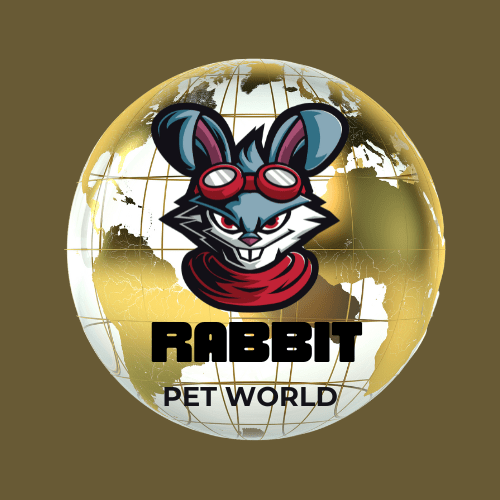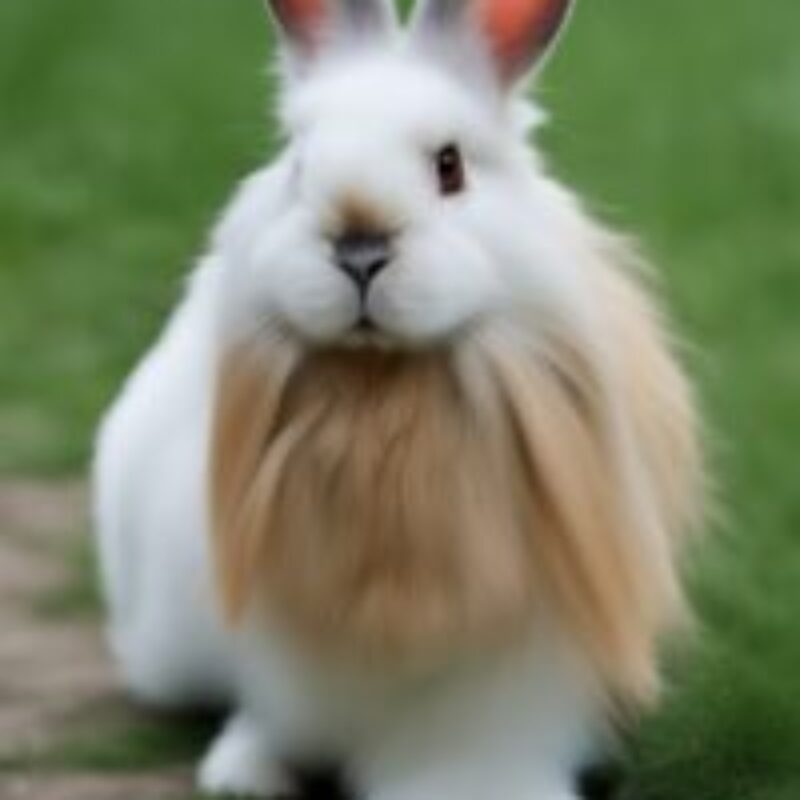Lionhead rabbits are known for their distinctive mane, small body size, and adorable fluffy appearance. However, ensuring that your Lionhead rabbit meets the correct body proportion requirements is essential for its health, mobility, and overall well-being. This guide covers everything you need to know about the ideal body proportions of a Lionhead rabbit, how to assess them, and how to maintain a healthy physique.
- Understanding the Standard Lionhead Rabbit Body Proportions:
- Step-by-Step Guide to Assessing Your Lionhead Rabbit’s Body Proportions
- How to Maintain Proper Lionhead Rabbit Body Proportions
- Common Body Proportion Issues in Lionhead Rabbits
- Conclusion: Ensuring a Healthy, Well-Proportioned Lionhead Rabbit
- Frequently Asked Questions (FAQs)
Understanding the Standard Lionhead Rabbit Body Proportions:
The American Rabbit Breeders Association (ARBA) and the British Rabbit Council (BRC) have established specific body proportion requirements for Lionhead rabbits. These standards ensure that breeders produce healthy rabbits while maintaining the breed’s unique characteristics.
1. Weight Proportions:
A healthy adult Lionhead rabbit should weigh between 2.5 and 3.75 pounds (1.1 and 1.7 kg). According to breed standards:
- A junior Lionhead rabbit (under 6 months) should weigh no more than 2.5 pounds (1.13 kg).
- A senior Lionhead rabbit (over 6 months) should fall within the range of 2.5 to 3.75 pounds.
Note: Overweight or underweight rabbits may face serious health issues, including mobility problems and digestive disorders.

2. Body Shape and Structure
The ideal Lionhead rabbit body structure is compact and well-balanced, with the following characteristics:
- A short, well-rounded body with a broad chest.
- A firm, muscular build rather than a slender or bony appearance.
- Straight front legs and strong, well-proportioned hind legs for proper mobility.
A poorly proportioned Lionhead rabbit may show signs of spinal deformities, excessive weight gain, or weak limbs, which can impact its ability to move freely.
3. Mane Proportions
One of the defining features of a Lionhead rabbit is its mane, which should be evenly distributed around the head. There are two types of Lionhead manes:
- Single-maned Lionhead rabbits have a thin mane that may disappear as they mature.
- Double-maned Lionhead rabbits have a thick, woolly mane that extends to their flanks.
Tip: Regular grooming is necessary to prevent matting and maintain a neat appearance.
Step-by-Step Guide to Assessing Your Lionhead Rabbit’s Body Proportions
Step 1: Weigh Your Rabbit
Use a small animal scale to check your Lionhead rabbit’s weight. Compare it with the breed standard to ensure it’s within the healthy weight range.
2: Check Body Shape and Structure
- Place your rabbit on a flat surface.
- Run your hands gently along its spine and ribcage.
- Ensure there are no protruding bones or excessive fat accumulation.
3: Examine the Mane
- Look for symmetrical hair distribution around the head.
- Feel for knots or tangles that may require grooming.
4: Observe Movement and Posture
- Watch your rabbit hop and stand.
- Ensure there’s no limping, stiffness, or signs of discomfort.

How to Maintain Proper Lionhead Rabbit Body Proportions
1. Provide a Balanced Diet
A high-fiber diet is essential for maintaining a healthy weight and strong muscles.
- 80% Hay (Timothy hay, orchard hay, or meadow hay)
- 10% Leafy greens (Kale, parsley, romaine lettuce)
- 5% Pellets (High-fiber, low-calcium pellets)
- 5% Treats (Limited fruits and healthy snacks)
Avoid sugary treats, excessive pellets, or high-calcium foods that can cause weight gain.

2. Encourage Daily Exercise
A Lionhead rabbit needs at least 3-4 hours of exercise per day. Provide:
- A spacious play area to hop and explore.
- Tunnels, ramps, and interactive toys to keep them active.
- Supervised outdoor playtime in a secure, fenced area.
3. Maintain Regular Grooming
- Brush your rabbit’s mane at least twice a week.
- Trim excess fur to prevent matting.
- Check for skin issues or signs of parasites.
4. Schedule Veterinary Checkups
Regular vet visits are essential to ensure your rabbit maintains a healthy weight and body structure. Seek veterinary advice if you notice:
- Sudden weight loss or gain.
- Mobility issues.
- Difficulty eating or chewing.

Common Body Proportion Issues in Lionhead Rabbits
1. Overweight Lionhead Rabbits
An overweight rabbit may have a round, bulky body, excessive fat rolls, and difficulty moving. Causes include:
- Overfeeding pellets and treats.
- Lack of exercise.
- Genetic predisposition.
2. Underweight Lionhead Rabbits
Signs of an underweight rabbit include a prominent ribcage and spine. Causes may include:
- Poor diet or lack of nutrients.
- Dental issues making it hard to eat.
- Illness or parasites affecting digestion.
3. Disproportionate Mane Growth
- If the mane becomes excessively long, it can cover the eyes and lead to vision problems.
- Trimming and grooming can help maintain a balanced, healthy appearance.
Conclusion: Ensuring a Healthy, Well-Proportioned Lionhead Rabbit
Proper body proportion requirements are crucial for a healthy and active Lionhead rabbit. By providing a balanced diet, exercise, grooming, and regular veterinary care, you can ensure your fluffy friend stays happy and well-proportioned!
Looking to buy Lionhead rabbit care essentials? Check out our recommended products here!
Frequently Asked Questions (FAQs)
1. What size cage does a Lionhead rabbit need?
A Lionhead rabbit needs a spacious cage that allows them to move freely and stay active. The ideal cage size should be at least 4 feet long, 2 feet wide, and 2 feet high (48” x 24” x 24”). However, bigger is always better! Since Lionhead rabbits are highly energetic, they require ample space to hop, stretch, and explore.
If you plan to keep your rabbit indoors, consider using an exercise pen (such as an x-pen) instead of a small cage. This provides them with more room to move around. If the rabbit is housed outdoors, the enclosure should be secure, weatherproof, and predator-proof to ensure their safety.
A proper setup should also include:
- Soft bedding (avoid wire bottoms as they can hurt their feet)
- A litter box for easy cleanup
- Tunnels and hiding spots for mental stimulation
- Food and water bowls (preferably heavy or attached to prevent tipping over)
2. What are the standards for Lionhead rabbits?
The American Rabbit Breeders Association (ARBA) and British Rabbit Council (BRC) have specific breed standards for Lionhead rabbits, including:
✅ Size & Weight: Adult Lionhead rabbits should weigh between 2.5 to 3.75 lbs (1.1 to 1.7 kg).
✅ Body Shape: They have a compact, well-rounded body with a short back and broad shoulders.
✅ Mane Type: The mane should be dense, woolly, and at least 2 inches long, forming a full circle around the head. It should extend to the chest area, giving them their signature “lion-like” look.
✅ Ears: Their ears should be short and upright, typically no longer than 3 inches.
✅ Coat Quality: A Lionhead’s coat should be soft, thick, and easy to groom, with the mane being the defining feature.
These standards help define a purebred Lionhead rabbit and ensure they meet breed expectations in terms of appearance, size, and proportions.
3. What body type is a Lionhead rabbit?
The Lionhead rabbit has a compact and well-balanced body type. This means their body is short, rounded, and sturdy, rather than elongated or thin. Their broad chest, slightly arched back, and short legs give them a strong but delicate appearance.
One of their most unique features is the mane, which gives them a lion-like look. Some rabbits have a single mane, while others have a double mane, which results in a fuller, fluffier coat. Their ears are upright and proportionate to their head, enhancing their distinctive appearance.
4. What disqualifies a Lionhead rabbit?
A Lionhead rabbit may be disqualified from show competitions if they do not meet breed standards. Common reasons for disqualification include:
❌ Exceeding or falling below the weight limit (should be between 2.5 – 3.75 lbs)
❌ Missing or underdeveloped mane (especially in double-maned rabbits)
❌ Incorrect ear length (ears longer than 3 inches)
❌ Fur that is too short, thin, or lacking the woolly texture
❌ Improper body shape (e.g., too long, too slender, or disproportionate)
❌ Visible health issues (e.g., dental problems, overgrown nails, or injuries)If you’re planning to show your Lionhead rabbit, it’s important to ensure they meet official breed standards. Even if your rabbit doesn’t qualify for shows, they can still be a wonderful pet and loving companion!







